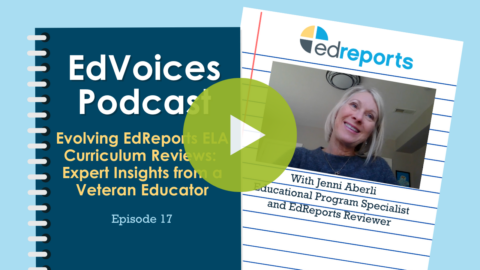SCHEDULED MAINTENANCE: EdReports.org will be undergoing system maintenance from February 21-23, 2025. During this time, our website, email, and other related services may be temporarily unavailable. To contact us or stay informed, please follow us on LinkedIn, Facebook, Bluesky, Threads, and YouTube. We apologize for any inconvenience.
Building a Foundation for Multilingual Learners in California with High-Quality Instructional Materials
Learn more about how California educators came together to provide independent information about how well middle school mathematics programs meet the needs of multilingual learners.
Related Resources
EdReports: A Key Tool in a Comprehensive Curriculum Strategy
Why states must pair independent reviews with a holistic approach to curriculum adoption that centers teachers in decision-making and prioritizes local needs.
How ELA Curriculum and EdReports Reviews Have Evolved
Educator Jenni Aberli shares expert insights on ELA curriculum review, supporting teachers, and how EdReports' updated review tools reflect the latest research.
Louisiana’s Education Model: A Student Improvement Blueprint
Louisiana’s model of curriculum reform and teacher training provides a roadmap for improved student outcomes amid national declines.


